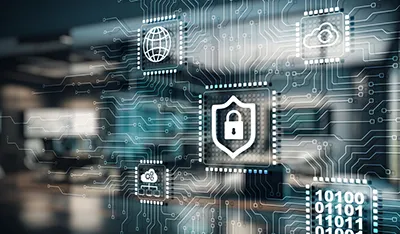Data Destruction Solutions: A Crucial Element in Your Cyber Security Technique
Data Destruction Solutions: A Crucial Element in Your Cyber Security Technique
Blog Article
The Vital Nature of Information Devastation in Upholding Computer System Safety Solutions and Protecting Against Unauthorized Accessibility
In an age where data violations and identity burglary are significantly widespread, the value of reliable information devastation can not be overemphasized. Organizations has to identify that the failing to effectively get rid of sensitive info postures not only legal and monetary dangers yet also a possible disintegration of client trust fund. Various approaches, from data cleaning to physical devastation, function as vital safeguards against unapproved accessibility. However, recognizing the ramifications of information destruction methods and conformity with policies raises important inquiries concerning the adequacy of existing methods and their long-term practicality in the face of developing dangers.
Significance of Information Damage
In an increasingly digital world, the significance of data damage can not be overemphasized. As companies amass large amounts of delicate details, the possible consequences of falling short to correctly handle and dispose of that data end up being progressively serious. Data breaches, identity burglary, and company reconnaissance pose considerable hazards, highlighting the necessity of efficient data devastation methods.

Additionally, as modern technology advances, so also do the methods by which harmful stars look for to exploit delicate details. Organizations has to continue to be cautious and proactive in their data destruction approaches to protect against these progressing threats. By prioritizing data damage, business not only safeguard their possessions yet likewise foster trust fund among stakeholders and clients, demonstrating a dedication to liable information management and safety techniques.
Approaches of Effective Data Destruction
To guarantee the complete and irreversible destruction of delicate information, organizations can employ a range of effective methods tailored to their particular needs. One of the most typical methods is information wiping, which includes making use of specialized software to overwrite existing data several times, making healing practically difficult. This is specifically valuable for solid-state drives and tough drives, where traditional deletion methods are insufficient.
One more efficient strategy is degaussing, which makes use of strong electromagnetic fields to interrupt the magnetic domain names on storage media, rendering the information irretrievable. This technique is specifically suited for magnetic storage gadgets, such as disk drive and tough disks.
Physical destruction is likewise a feasible option, including the shredding, squashing, or incineration of storage tools. This technique warranties that data can not be recuperated, making it excellent for organizations managing extremely sensitive information.

Compliance With Data Security Laws
Organizations have to not just concentrate on effective data devastation methods but also guarantee conformity with information defense laws that govern exactly how sensitive info is handled and taken care of. Complying with these laws is vital for guarding individual information and keeping customer trust fund. Laws such as the General Information Defense Guideline (GDPR) in the European Union and the Medical Insurance Mobility and Accountability Act (HIPAA) in the USA enforce stringent guidelines on data monitoring, that include needs for the safe disposal of sensitive info.
To achieve compliance, companies should execute detailed information devastation policies that line up with these legal frameworks. This consists of identifying data that calls for damage, developing protocols for protected methodsâEUR" such as shredding physical media or using software program that satisfies sector criteria for data wipingâEUR" and preserving comprehensive documents of destruction tasks. Regular audits ought to be performed to ensure adherence to these plans and to identify any type of possible areas for renovation.
Failure to adhere to information protection laws can result in significant legal ramifications, including large fines and damage to a company's track record. click this link For that reason, integrating compliance into data devastation methods is not only a legal responsibility however likewise an important component of a durable info protection strategy.
Effects of Poor Information Handling
Poor information handling can lead to serious repercussions that prolong beyond instant operational problems. Organizations may face significant financial losses due to data violations, which frequently result in costly removal initiatives, lawful charges, and regulatory fines. These economic effects can hinder and strain resources growth, eventually impacting a company's profits.
Moreover, poor data handling can badly damage a company's track record. Customers, stakeholders, and companions might shed rely on an entity that falls short to secure sensitive information, resulting in reduced customer commitment and potential loss of service opportunities. This disintegration of depend on can take years to rebuild, if it can be recovered whatsoever.
In addition, organizations could deal with lawful ramifications emerging from non-compliance with information defense guidelines. Such violations might result in charges and examinations, intensifying the financial burden and additional staining the organization's picture.
In the world of cybersecurity, insufficient information management methods can develop susceptabilities that make systems extra susceptible to unauthorized gain access to and cyberattacks. Inevitably, these effects emphasize the important significance of implementing durable information managing procedures to guard delicate details and keep business stability.
Ideal Practices for Secure Information Disposal


First of all, data should be categorized according to its sensitivity. Delicate information needs a lot more rigorous disposal methods, such as shredding physical papers and making use of innovative software for digital information wiping. Employing licensed information devastation services guarantees conformity with sector look at this website guidelines and requirements.
Second of all, companies need to implement a data disposal policy that mandates regular audits. This policy should describe the procedures for data retention and destruction, making sure that obsolete data is thrown away immediately and firmly. Training workers on these procedures is crucial to fostering a society of safety and security awareness.
Lastly, maintaining thorough records of disposed information boosts liability and gives a clear audit route. This documents must consist of the kind of data destroyed, the technique used, and the day of disposal.
Final Thought
In conclusion, the necessary of effective data destruction appears in its duty in boosting computer safety services and mitigating unauthorized access dangers. Embracing robust methods such as data cleaning, degaussing, and physical damage, alongside conformity with guidelines like GDPR and HIPAA, is vital for protecting delicate details. Disregarding proper information disposal practices can bring about extreme effects, consisting of data violations and legal effects. Implementing finest practices in safe information disposal ultimately strengthens organizational honesty and customer count on.
In an era where data violations and identification theft are significantly prevalent, the significance of reliable data devastation can not be overstated. data destruction. Data violations, identity theft, and corporate espionage posture significant risks, highlighting the requirement of efficient information damage methods
Compliance with guidelines such as GDPR and HIPAA mandates that organizations carry out rigorous data protection procedures, consisting of the safe and secure devastation of information at the end of its lifecycle.
By focusing on data damage, companies not only shield their properties yet additionally foster count on amongst stakeholders and customers, showing a commitment to accountable data management and protection techniques.
Organizations need to not just focus on effective information devastation techniques yet additionally click resources guarantee conformity with data defense laws that govern how sensitive info is taken care of and disposed of.
Report this page